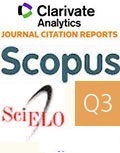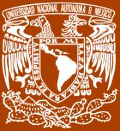Post-magmatic sedimentation in the Paraná Basin, Brazil: paleomagnetic constraints on the age of the Cretaceous Caiuá Group
Sedimentación post-magmática en la cuenca del Paraná, Brasil: Aproximaciones paleomagnéticas de la edad del Grupo Caiuá, del Cretácico
Marcia Ernesto1,*, Alessandro Batezelli2, Antonio Roberto Saad3, George Caminha-Maciel4, Paloma G. Oliveira1
1 Instituto de Astronomia, Geofísica e Ciências Atmosféricas, Universidade de São Paulo, R. do Matão, 1226 Butantã, São Paulo, Brazil.
2 Instituto de Geociências, Universidade Estadual de Campinas, R. Carlos Gomes, 250 Cidade Universitária, Campinas, São Paulo, Brazil.
3 Instituto de Geociências, Universidade de São Paulo,R. do Lago,562-Butantã, São Paulo Brazil.
4 Universidade Federal de Santa Catarina, Departamento de Geologia, R. Eng. Agronômico Andrei Cristian Ferreira, s/n Trindade, Florianópolis, Brazil.
Corresponding author: (M. Ernesto) This email address is being protected from spambots. You need JavaScript enabled to view it.
How to cite this article:
Ernesto, M., Batezelli, A., Saad, A.R., Caminha-Maciel, G., Oliveira, P.G., 2024, Post-magmatic sedimentation in the Paraná Basin, Brazil: paleomagnetic constraints on the age of the Cretaceous Caiuá Group: Boletín de la Sociedad Geológica Mexicana, 76 (3), A160124. http://dx.doi.org/10.18268/BSGM2024v76n3a160124
Manuscript received: October 23, 2023; corrected manuscript received: January 20, 2024; manuscript accepted: February 8, 2024.
ABSTRACT
The Caiuá and Bauru Groups of Cretaceous age, represent the post-volcanic sedimentation in the Paraná Basin. Under dry conditions, extensive dunes (Draa) were formed with depocenter in the southern area. Later, under more humid conditions, the fluvial-aeolian processes reworked the dunes, forming a landscape with small dunes and river channels. The Caiuá Group comprises, in ascending stratigraphic order, the Goio Erê Formation (margins of Draa), the Rio Paraná Formation (inner Draa) and the Santo Anastácio Formation (Paleosols). Paleomagnetic results from five sections of the Caiuá Group (Rio Paraná and Santo Anastácio formations) revealed that these rocks carry remanent magnetization due primarily to magnetite and smaller contents of hematite. A paleomagnetic pole at 87.4 ºS 56.6 ºE (N=29, A95=6.5°, k=18) for the Caiuá Group plots close to the poles from the dyke swarms (Ponta Grossa, Florianópolis and the alkaline dykes from Paraguay) of ages 134-127 Ma, indicating that the sedimentation of the Caiuá Group was restricted to the Lower Cretaceous. Furthermore, as part of the rocks were magnetized under transitional and reversed fields, the upper age limit is probably 120 Ma, the initiation of the Cretaceous Normal Superchron, and therefore not younger than the Barremian age.
Keywords: Caiuá Group, paleomagnetism, Paraná Basin, Cretaceous.

